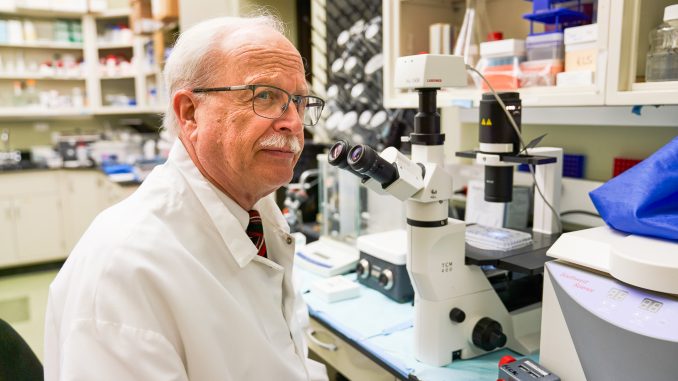
Recently released research from the Lewis Katz School of Medicine suggests that a cannabidiol-like molecule may be effective at treating pain resulting from chemotherapy.
A research team led by Sara Jane Ward, a professor of pharmacology, found certain applications of KLS-13019, a molecule developed by KannaLife Sciences, Inc., a biopharmaceutical company, might reverse pain from chemotherapy-induced neuropathy, or CIPN.
The research, funded by an approximate $300,000 grant from the National Institutes of Health’s National Institute of Drug Abuse, was published on Feb. 11.
So far, studies have shown that KLS-13019 is effective in preventing and reversing pain resulting from CIPN, differentiating it from CBD, Ward said. But there are many more studies that need to be conducted with KLS-13019 to determine if it could be a potential drug candidate and whether the compound can be brought into human clinical trials, she added.
CBD is derived from hemp, a cousin of the marijuana plant, and is commonly used to treat anxiety, according to the Harvard Health Blog.
Ward, an expert in animal studies, began researching whether CBD could prevent or reverse the effects of CIPN, a condition that causes pain in patients receiving chemotherapy in 2010. In studies, CBD has demonstrated it can prevent pain resulting from CIPN from occurring, but has yet to prove it can reverse it, Ward said. Additionally, because CBD has many effects on the human body and is difficult to deliver through a pill, it is challenging to study, she added.
“Traditionally, as researchers, we’re sort of trained to look for what’s the one thing that this compound is doing, so CBD presents a challenge in that regard because I could list about 20 different things that we know it does in the body,” she said.
William Kinney, a medicinal chemist and chief scientific officer at KannaLife, suggested redesigning and patenting CBD, leading to the creation of KLS-13019.
With the completion of the first phase of research, plans for a second phase are in progress, Ward said. The focus of the next round of research would be examining how safe KLS-13019 is for humans, she added.
“A lot of studies need to be done to determine that KLS-13019 is safe because the Phase 2 studies are really setting up for moving into clinical trials,” Ward said.
Ward will present her findings at the upcoming International Cannabinoid Research Society meeting in July.
Douglas Brenneman, a neuropharmacologist and a member of KannaLife’s Scientific Advisory Board, is working on fine-tuning the molecule, he said.
As studies on CBD and KLS-13019 progress, the hope, in the end, is to have an effective non-opioid treatment option for CIPN and, potentially, other medical needs, Brenneman said.
“We potentially have a solution here for pain management, and time will tell, but I think we might be onto something,” said Thomas Kikis, KannaLife’s founder.


Be the first to comment